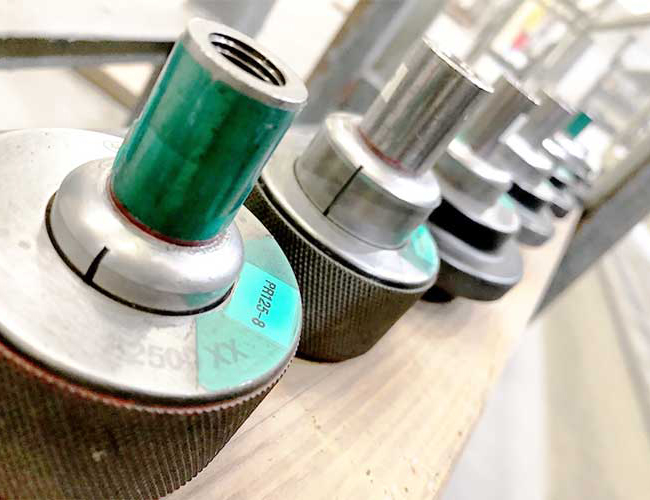Enhancing Metal Pipes, Tubes & Pumps for Longevity

In various industrial sectors, metal pipes, tubes, pumps, and assorted metal components are indispensable. However, they often face harsh operating conditions such as high temperatures, corrosive chemicals, and abrasive substances. Over time, exposure to these conditions can lead to wear and corrosion, jeopardizing equipment integrity and longevity. To counteract these challenges, manufacturers have embraced protective coatings as a solution to prolong the lifespan of metal components. This article will elucidate the significance of protective metal coatings, delve into the electroless nickel plating process, and explore alternative metal finishes and additives aimed at enhancing wear and corrosion resistance.

Significance of Protective Coatings
Protective coatings act as a shield between metal surfaces and external factors, offering defense against corrosion, wear, and degradation. By applying protective coatings to metal pipes, tubes, pumps, and other components, manufacturers can substantially extend their lifespan, thereby reducing maintenance costs and downtime.
One widely adopted method of protective coating is electroless nickel plating. This process entails depositing a nickel layer onto the metal surface through an autocatalytic chemical reaction. Electroless nickel plating provides exceptional corrosion and wear resistance, making it a preferred choice for numerous industrial applications.

Electroless Nickel Plating and Alternative Metal Finishes
Electroless nickel plating stands out as a versatile and efficient method for enhancing the performance and durability of metal components. This process involves several stages, including surface cleaning and preparation, catalyst application, and immersion in an electroless nickel solution. The outcome is a uniform, high-quality nickel coating for tubes, pipes, pumps, and other metal parts.
In addition to electroless nickel plating, manufacturers can explore alternative metal finishes to improve wear and corrosion resistance. Two notable alternatives to electroless nickel plating are:
1. High Phosphorus Nickel Plating: This type of nickel plating, characterized by a high phosphorus content, enhances corrosion resistance and coating hardness. It is particularly suitable for applications requiring superior corrosion protection. Finding a high phosphorus nickel plating partner can be achieved by reaching out to specialized plating companies or searching online directories.
2. Hard Chrome Plating: Hard chrome plating involves depositing a chromium layer onto a metal surface through electroplating. This process enhances durability, corrosion resistance, and wear resistance for industrial applications.
Additives in Electroless Nickel Solutions
To further enhance the performance of electroless nickel coatings, manufacturers often incorporate specialized additives into their electroless nickel solutions. These additives, such as silicon carbide, composite diamond particles, and boron nitride, can improve coating hardness, wear resistance, and lubricity.
Silicon Carbide: Silicon carbide, known for its hardness and abrasiveness, can be added to electroless nickel solutions to enhance wear resistance, thus prolonging the lifespan of metal components subjected to abrasive wear.
Composite Diamond Particles: Composite diamond particles, composed of diamond particles embedded in a nickel matrix, enhance coating hardness and wear resistance, making it suitable for high-wear applications.
Boron Nitride: Boron nitride, a lubricious material, can be added to electroless nickel solutions to reduce friction and improve coating lubricity, beneficial for components requiring smooth, low-friction surfaces.
Pipe Coating Services and Electroless Plating
In Texas, a prominent hub for oil and gas production, an Electroless plating company in Texas offers pipe coating services and develops a product known as Durabide®. This product, also referred to as Ni-Carb, provides corrosion-resistant coatings to safeguard metal pipes and components from the harsh conditions encountered in drilling, extraction, and transportation operations. Ni-Carb is Durabide® combines electroless nickel plating benefits with the toughness of silicon carbide and other specialized additives, offering superior wear resistance, corrosion protection, and lubricity.
Protective coatings play a crucial role in extending the lifespan of metal pipes, tubes, pumps, and other components exposed to demanding industrial environments. Electroless nickel plating stands as a proven method for enhancing wear and corrosion resistance, while incorporating specialized additives further enhances coating performance. For manufacturers in the oil and gas industry seeking reliable protection for metal components, products like Durabide® from Dura-Tech Processes, Inc., present an effective solution. When considering pipe coating service in Texas, Dura-Tech Processes, Inc. should be a top consideration for your coating needs.






